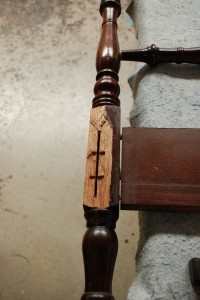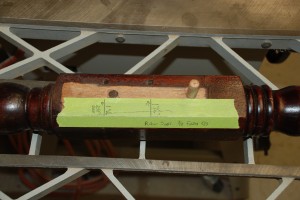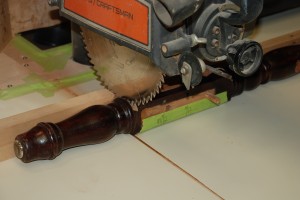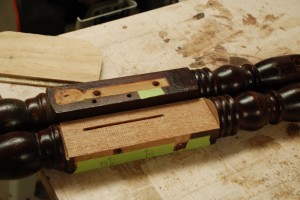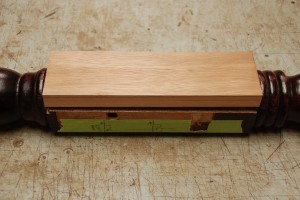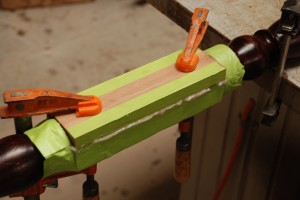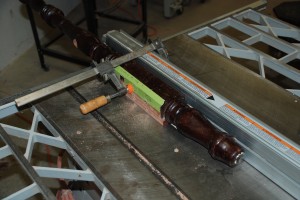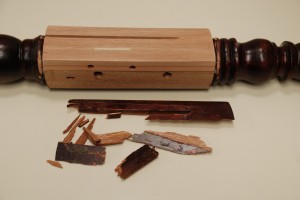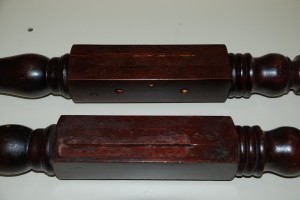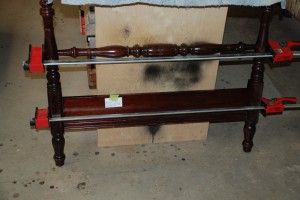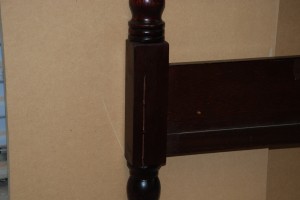Take one antique, heirloom bed, mix with two brothers, and what do you get? In this case a broken bed post.
This is a fairly common furniture repair around our shop. Most of the time we hear “I am not real sure how it happened”. This time the brothers confessed and both felt bad for accidentally damaging what had been their grandparent’s bed. These are obviously good kids. At our house all of our kids would have blamed the other ones, or all the boys would have blamed their sister.
After we brought the bed to the shop, one of the brothers started asking his mother just how we were going to fix it. He wanted details too. So this post is for you Burke.
The footboard we worked on is part of a pair of nice mahogany twin beds from the early to mid 20th century. Most beds of this era are assembled with hooks in the bed rails and pins in the bed posts. When leverage is applied to either piece the post is damaged where the pins are inserted. That is simple physics. The first photo shows the results as we begin to disassemble the footboard.
Before we can repair the damage we need to disassemble the footboard so we can work on just the post. Here you see the two bed posts along with the turned cross rail. 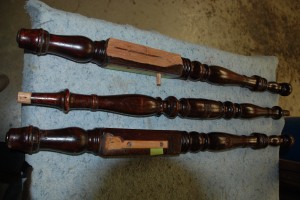
Now that we can work on the damaged post, we measure and mark for the pin holes and the rail slot. If we cut the damage away first, we can lose the ability to locate the pins or possibly cut the slot in the wrong place.
We cut away the damaged wood with a dado cut on the radial arm saw. Here you can see the saw set up with the blade raised to only cut away the damaged wood. It takes many passes to cut out all the damage using the regular blade. A dado blade can be used to make wider cuts per pass, but it would take longer to change the blade than doing it this way.
Now that all the damaged wood is removed, we cut a new piece to size to insert into the post. We are using genuine mahogany which is what the bed is made from. Below you can see the post with the damage removed, sitting next to the undamaged post, and the new piece of mahogany cut to size.
The new piece of mahogany is glued and clamped in place using an epoxy adhesive. The epoxy was originally formulated for wooden boat building. It will penetrate into the wood and fill all the gaps in the joint, then sit in clamps overnight. Once cured, the adhesive is stronger than the wood.
When the clamps are removed, the new wood is shaped to match the surrounding areas, the edge is cleaned up and the repaired area is sanded smooth. The new pin holes are drilled according to the marks we made on the green tape. Then we clamp the post onto the table saw to cut the slot for the rail hooks. This is done by raising the blade into the wood while it is clamped to the table saw.
That completes the woodworking part of the repair. Here beside the repaired post, you can see the original splintered pieces of wood. The next shot is the repaired post after the finish has been touched up to match the bed.
The footboard is glued and assembled. It will remain in clamps overnight to cure.
Here is a closer picture of the repaired post after final assembly. Good as new!
If you have stayed with me this far, thanks for reading.

